Need a Design Superhero?
Connect with our Expert Interior Designers! hello.你好もしもし.hola.
GURGAON
Find Us
C2- 23A 3RD FLOOR, Block C2,
Sushant Lok Phase I, Sector 43,
Gurugram, Haryana 122002
Need a Design Superhero?
Connect with our Expert Interior Designers! hello.你好もしもし.hola.
GURGAON
Find Us
C2- 23A 3RD FLOOR, Block C2,
Sushant Lok Phase I, Sector 43,
Gurugram, Haryana 122002
June 23rd, 2025
Designing a kid’s space is more than furniture and colors. It’s about creating a place for imagination, learning, and growth. A well-designed children’s bedroom decor is both fun and useful. It’s a place for kids to play, rest, and grow. Playful decor for kids’ rooms boosts creativity. It makes the room special. You can use bright colors and fun themes.
Creating a kid-friendly bedroom begins with getting to know your child well. It’s important to think about their age, personality, and likes. This helps make a room that they’ll love and use every day.
Bedrooms change as kids grow. Toddlers need safe, fun spaces. Teenagers want privacy and to show off their style.
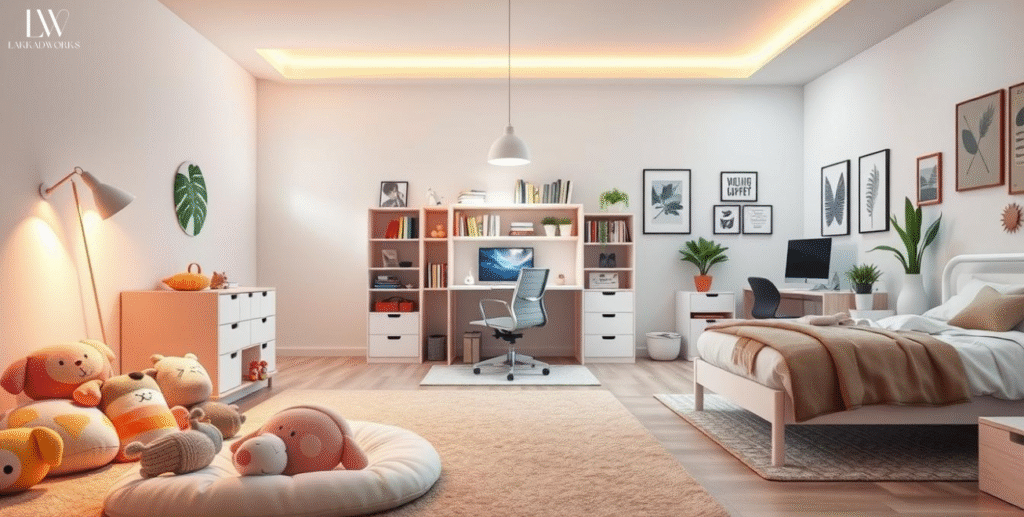
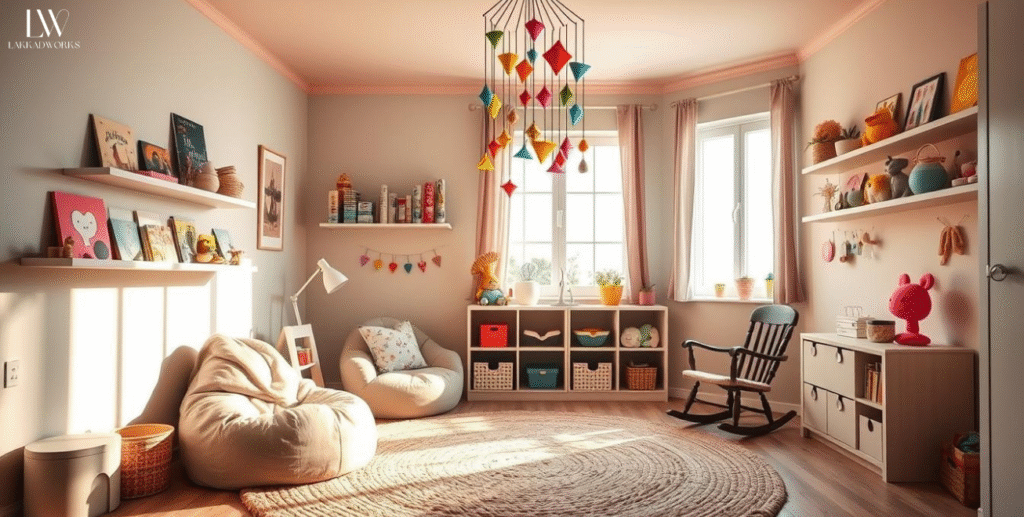
Designing a kid’s room is all about finding a balance. It should be fun and functional at the same time. A good design can boost a child’s creativity and happiness.
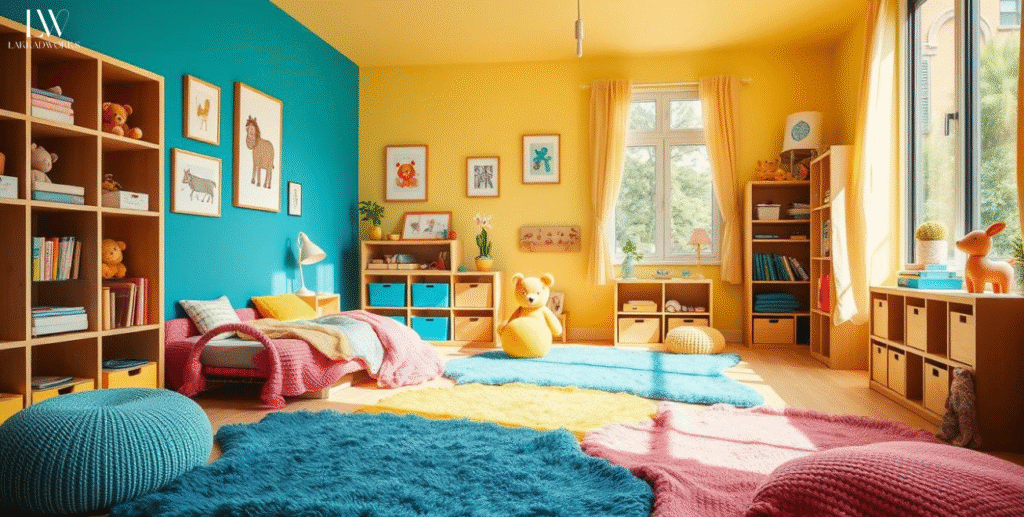
Choosing the right colors for a kid’s room is very important. The colors can make the room fun and useful. They can also help a child feel calm, happy, and even change their mood.
For example, a bright color for play and a soft color for sleep. This makes the room easy for kids to understand.
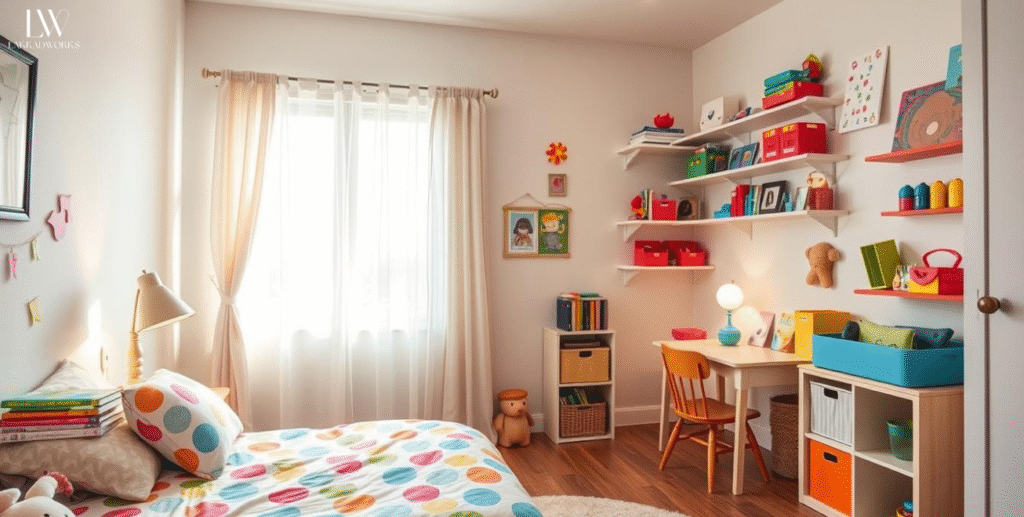
Children’s furniture needs change as they grow. It’s key to pick pieces that grow with them. This makes furniture last longer and keeps kids comfortable.
By picking furniture that’s adaptable and durable, you make a bedroom that grows with your child. Companies in Gurgaon and makers like Lakkadworks have great options. They help create a safe, comfy space for kids.
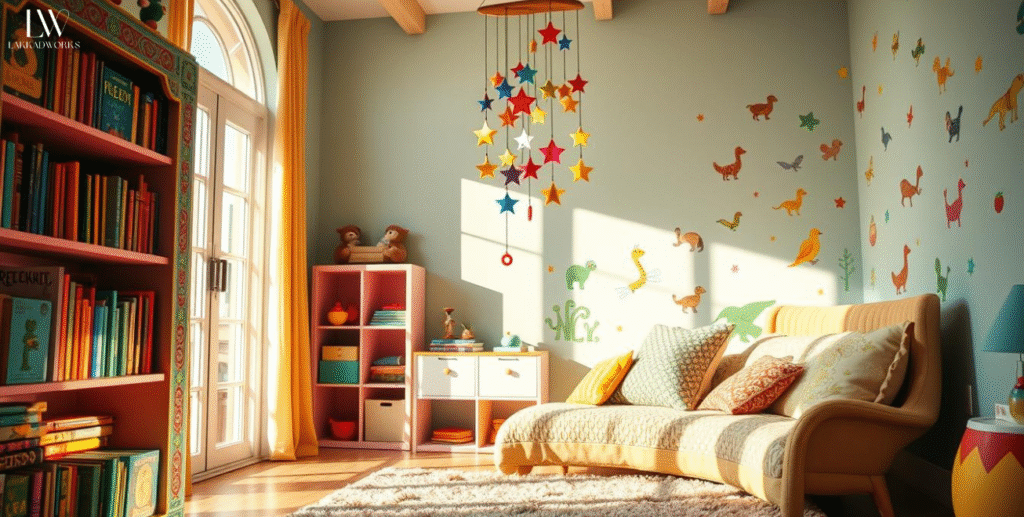
Keeping a kid’s room tidy is key. It teaches them about cleanliness and helps them focus and be creative.
Designing a room that encourages organization is smart. It teaches kids to sort and keep things in order. This helps them learn important life skills.
With these creative storage ideas, you can make a playful decor for kids’ rooms. It’s both fun and useful, keeping the room tidy and fun for kids.
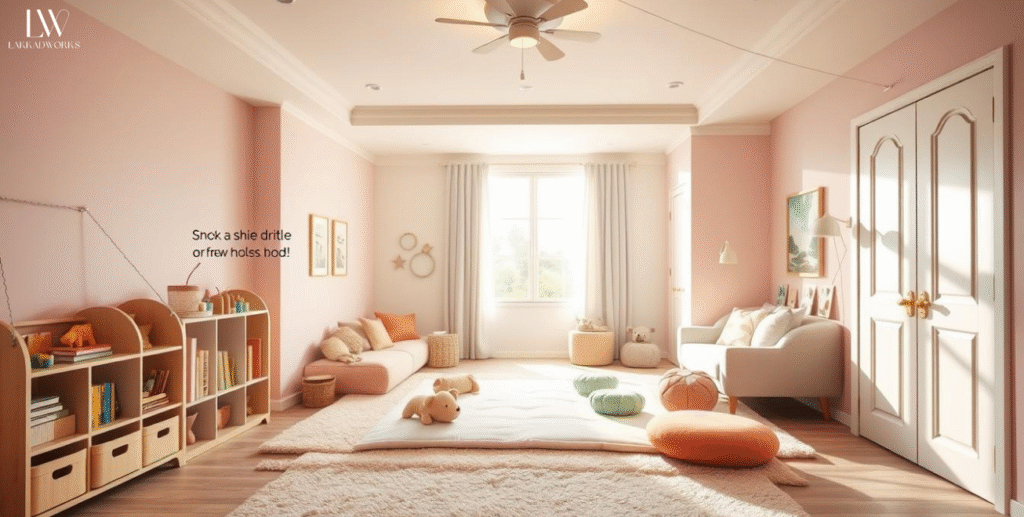
A good kid’s room is safe, pretty, and useful. It must meet the child’s needs and be practical.
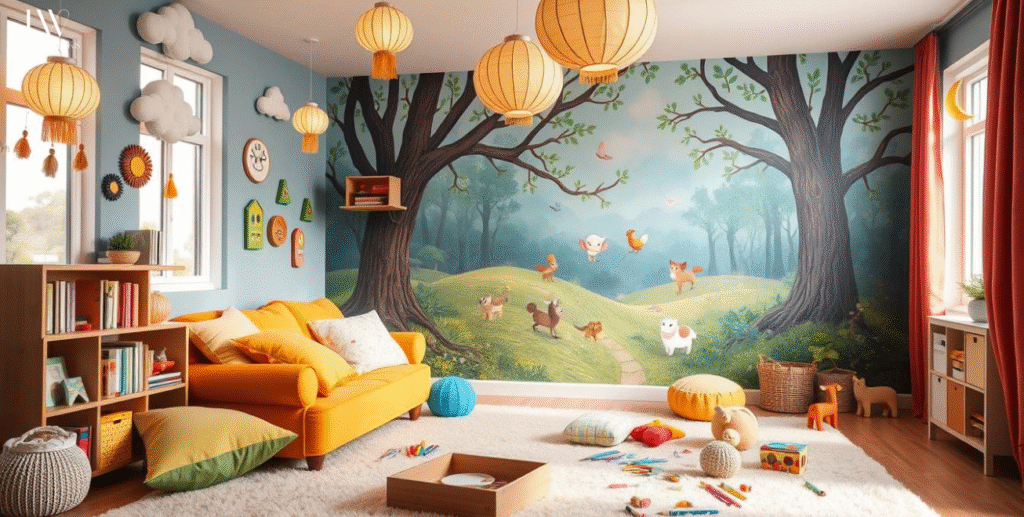
The walls of a kid’s room are like a canvas. They let parents add whimsical kids room decor and stylish kids bedroom inspiration. The right decor and art make the room fun and useful.

Designing a kid’s room is more than furniture and colors. It’s about making a space for growth, imagination, and happiness. By knowing what your child needs and getting them involved, you can make a room that’s both useful and fun.
A good children’s bedroom decor can change your child’s day-to-day life. It’s all about the little things, like fun decor and smart storage. Think about working with an interior designing company in Gurgaon to make your dream room come true.
Make a room your child will love by mixing fun with function. Whether you’re starting fresh or updating, be open to new ideas. With these tips, you’re ready to make a beautiful and useful kid’s room.
When designing a kid’s room, think about age, function, safety, and making it personal. Create zones for different activities. Use storage solutions and furniture that can do more than one thing.
Getting your child involved in the design is a great idea. Ask them about colors, furniture, and decor. Let them show their personality through the design. This way, they’ll love the final space.
Popular themes include space, woodland, and adventure. You can also choose timeless or character-based designs. DIY projects can add a special touch.
To keep the room safe, use childproofing essentials. Secure furniture and outlets. Use safe materials and finishes. Install safety gates. Be careful with tech in bedrooms and use kid-friendly gadgets.
For creative storage, use systems that are easy to access. Try rotation systems for toys and hidden storage. Teach your child to organize and use storage in furniture and decor.
Choose colors based on their meaning and what’s popular. Go for neutral, bright, or calming colors. Use colors to divide the room for fun and function.
Adding {{itemName}} to cart
Added {{itemName}} to cart